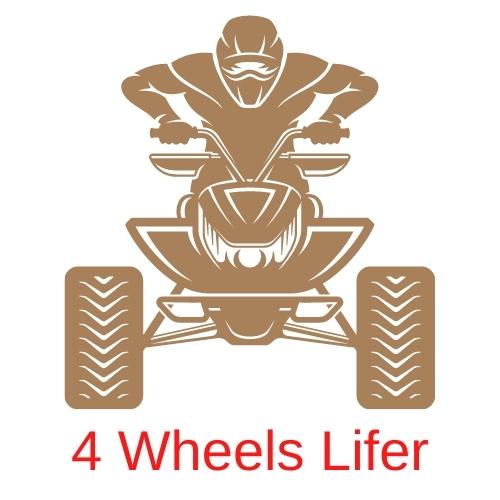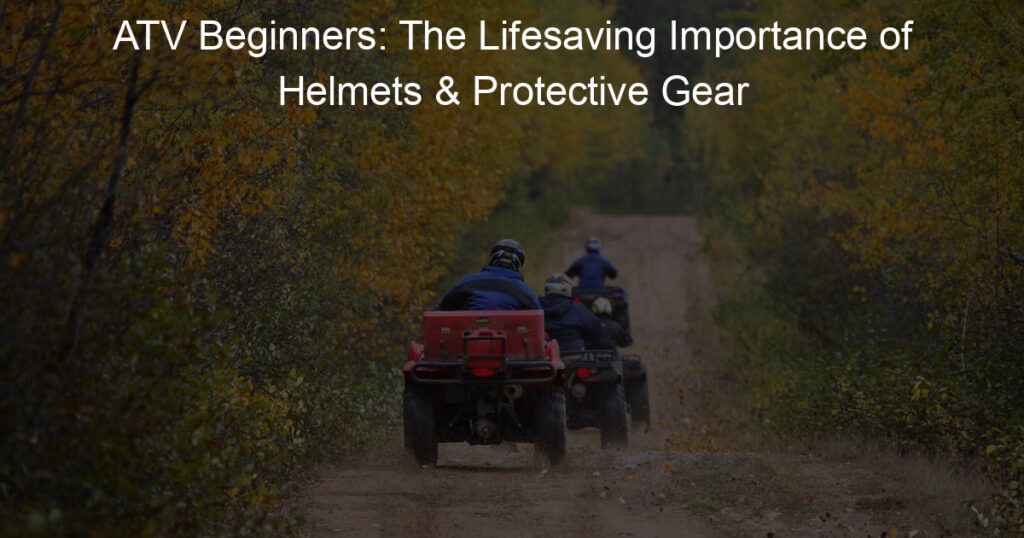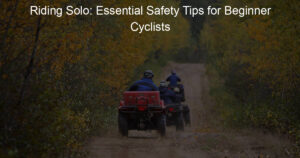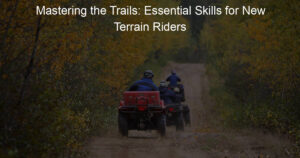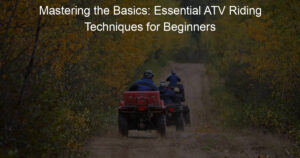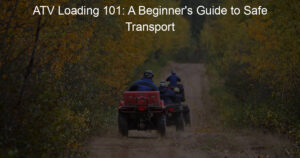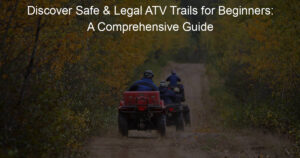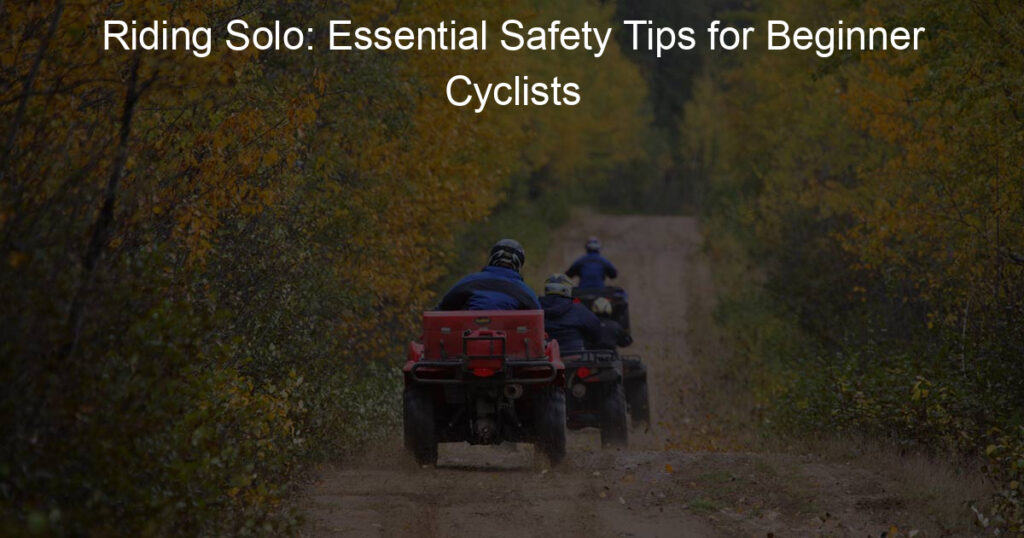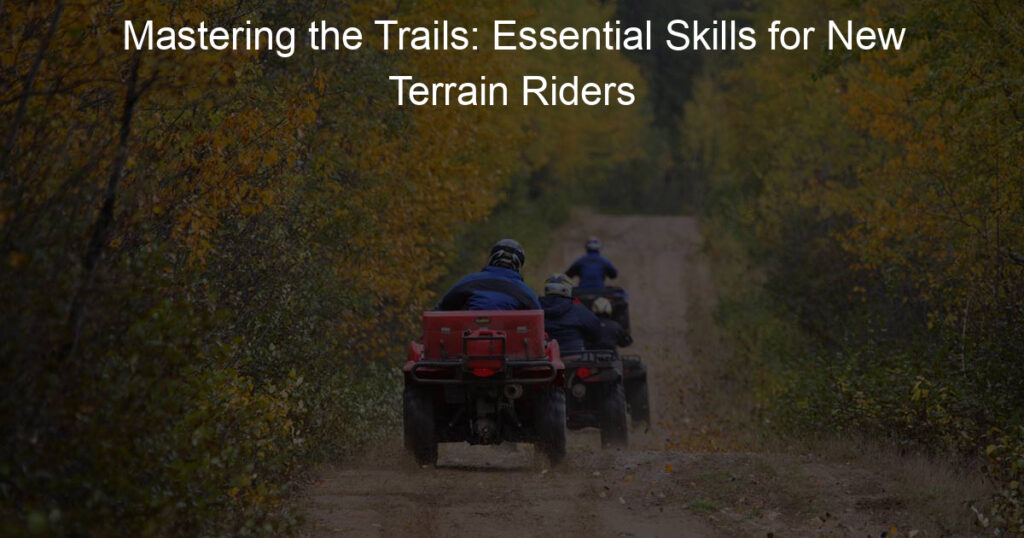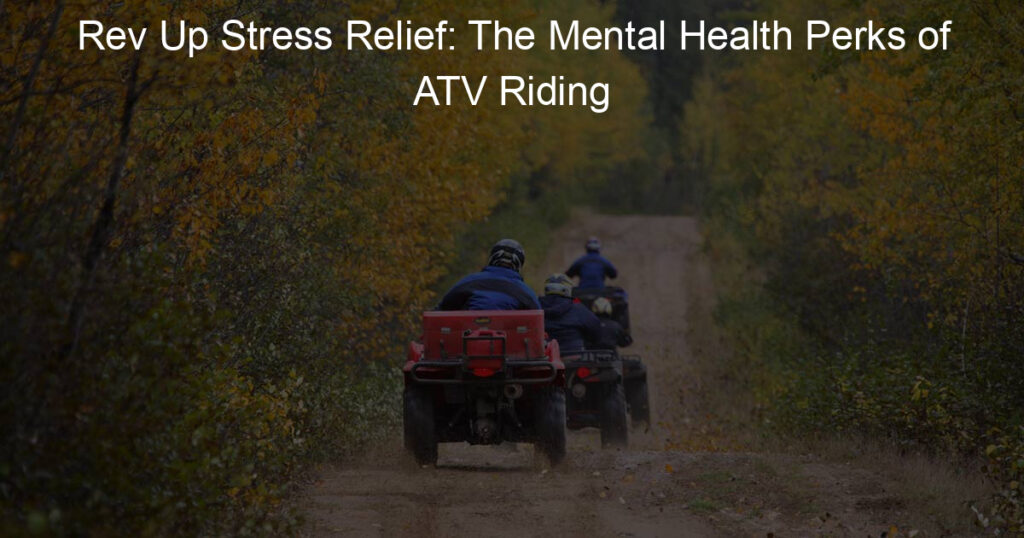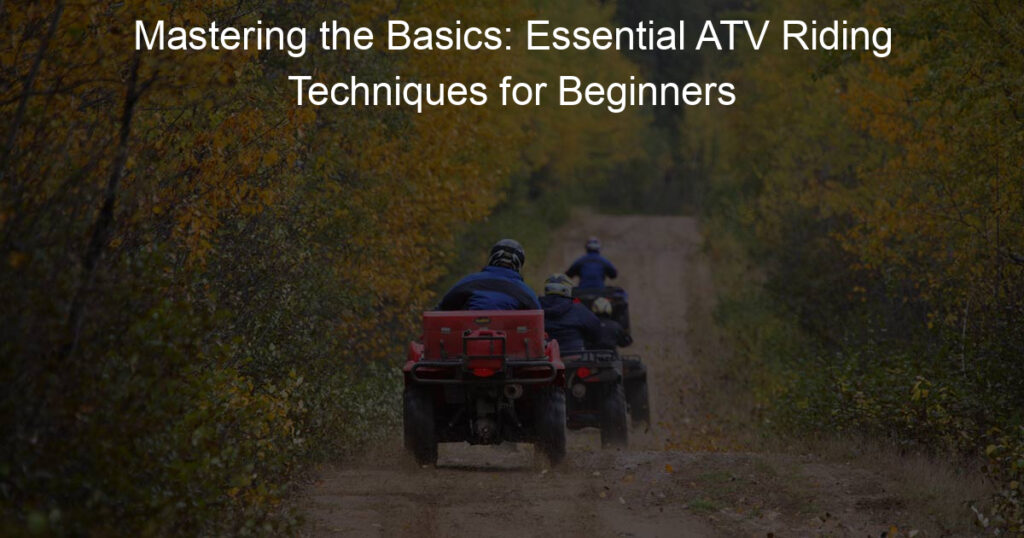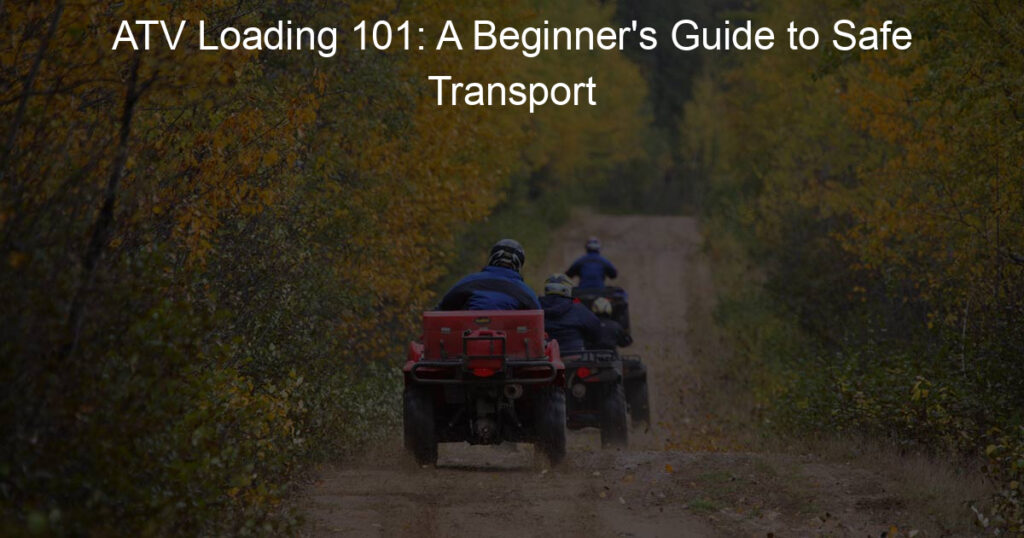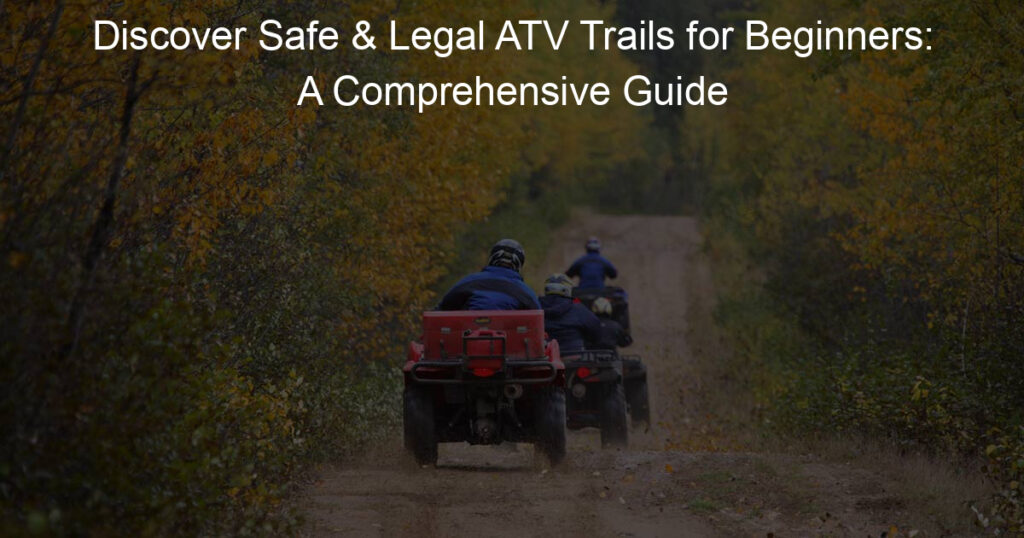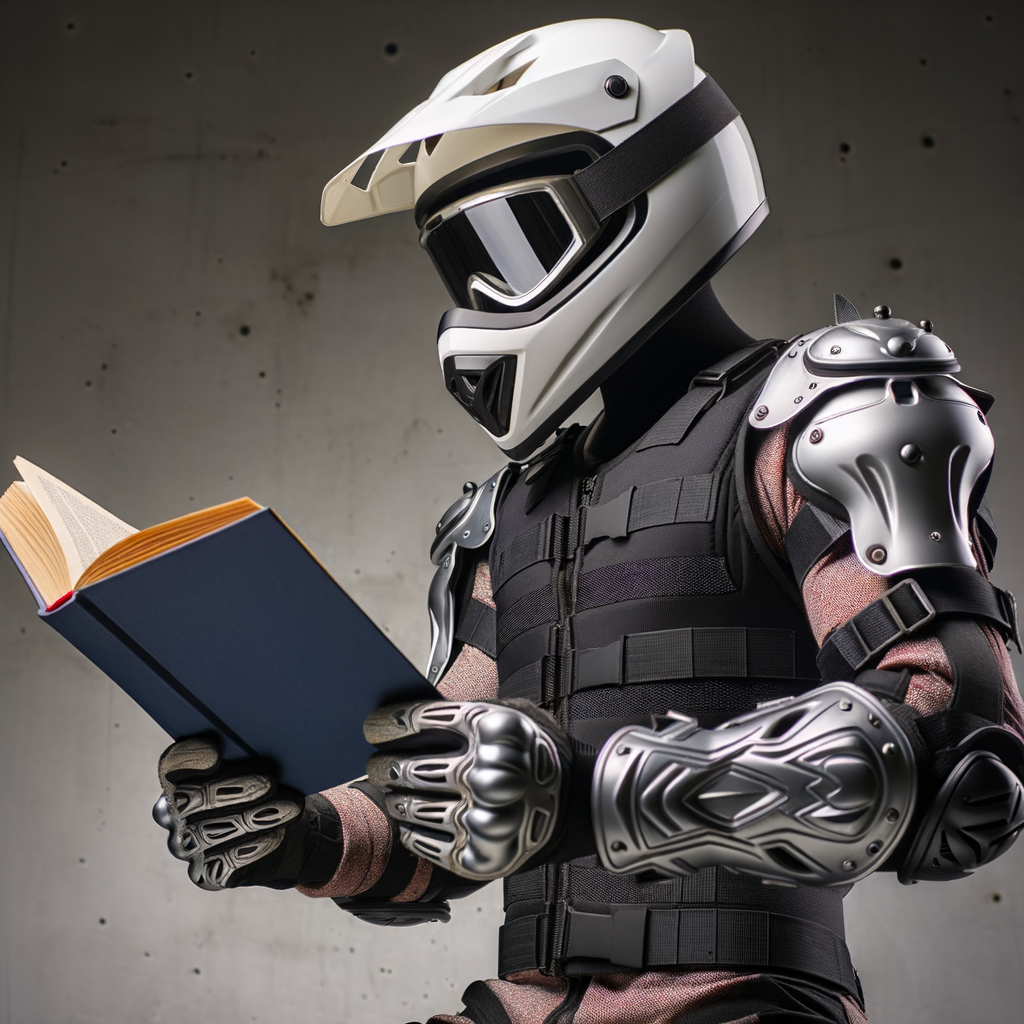
Introduction to ATV Riding: A Beginner’s Guide
Welcome to the exciting world of ATV (All-Terrain Vehicle) riding! This beginner’s guide will provide you with essential information to get you started on your ATV adventure. We will cover the basics of ATV riding and provide some crucial safety tips for beginners. Let’s dive in!
-
Understanding the Basics of ATV Riding
ATV riding is a thrilling outdoor activity that can be enjoyed by people of all ages. An ATV, also known as a quad or four-wheeler, is a vehicle that travels on low-pressure tires, with a seat that is straddled by the operator, and handlebars for steering control.
ATVs are designed to handle a wider variety of terrain than most other vehicles. This makes them a popular choice for outdoor enthusiasts. However, riding an ATV requires some basic skills and understanding. Here are some key points:
- Know your ATV: Familiarize yourself with your ATV. Understand its controls, how it responds to various inputs, and how it behaves on different terrains.
- Practice makes perfect: Like any new skill, practice is essential. Start in a safe, controlled environment before venturing onto more challenging terrains.
- Stay within your limits: Always ride at a speed that is suitable for your skill level and the current conditions.
-
ATV Riding Safety Tips for Beginners
Safety should be your top priority when riding an ATV. Here are some safety tips every beginner should know:
- Wear appropriate gear: Always wear a helmet, goggles, long sleeves, long pants, over-the-ankle boots, and gloves.
- Never ride alone: Always have a buddy with you in case of emergencies.
- Take a safety course: Consider taking an ATV safety course. It’s a great way to learn safe riding techniques and laws.
By understanding the basics of ATV riding and following these safety tips, you can ensure a fun and safe ATV riding experience. Remember, the key to becoming a proficient ATV rider is practice, patience, and a commitment to safety. Happy riding!
The Importance of ATV Safety Gear
When it comes to All-Terrain Vehicle (ATV) riding, safety should always be a top priority. One of the key ways to ensure safety while enjoying this thrilling activity is by wearing appropriate ATV safety gear.
Why Wear ATV Protective Gear?
Wearing protective gear while riding an ATV is not just about following the rules, it’s about ensuring your safety and enhancing your riding experience. Let’s delve into the reasons why wearing ATV protective gear is so important.
- Reduction of Injury Risks
- Enhancement of Riding Experience
ATV riding can be risky. Accidents can happen, and when they do, the right gear can make a significant difference. Wearing protective gear such as helmets, gloves, and body armor can greatly reduce the risk of severe injuries. According to a study by the U.S. Centers for Disease Control and Prevention, riders who do not wear helmets are twice as likely to suffer a head injury compared to those who do.
Aside from safety, wearing ATV protective gear can also enhance your riding experience. Good quality gear can provide comfort, allowing you to ride for longer periods without discomfort. For instance, gloves can prevent blisters on your hands, while goggles can keep dust and debris out of your eyes. By wearing the right gear, you can focus more on the ride and less on any discomfort.
In conclusion, wearing ATV safety gear is not just about compliance, it’s about protecting yourself and making the most out of your ATV riding experience. So, gear up and ride safe!
Essential Gear for ATV Beginners
When you’re starting out on your ATV riding journey, it’s crucial to prioritize safety. Here are the four essential pieces of gear every beginner should have:
- ATV Helmet
- Eye Protection
- Body Armor
- Boots and Gloves
A helmet is the most important piece of safety gear. It protects your head from serious injuries. According to the U.S. Department of Transportation, helmets reduce the risk of head injury by 69% and the risk of death by 42%. Make sure your helmet fits snugly and is certified by the Department of Transportation.
Eye protection, such as goggles, shields your eyes from dust, debris, and insects that can impair your vision while riding. They also protect your eyes from potential injuries. Choose goggles that fit well with your helmet and have a clear, scratch-resistant lens.
Body armor includes chest protectors and knee and elbow pads. They protect your body from impact in case of a fall or collision. Look for body armor that is comfortable, fits well, and offers good coverage.
Boots protect your feet and ankles while gloves shield your hands from blisters and cuts. They also provide better grip and control. Choose boots and gloves that are durable, comfortable, and made for ATV riding.
Remember, safety should always come first when riding an ATV. With the right gear, you can enjoy the thrill of ATV riding while minimizing risks.
ATV Helmet Importance: A Lifesaver
When it comes to All-Terrain Vehicle (ATV) riding, safety is paramount. One of the most crucial safety gears is the ATV helmet. Let’s delve into why an ATV helmet is so important.
Why is an ATV Helmet So Important?
An ATV helmet serves two main functions:
- Protection against head injuries: This is the primary role of any helmet. In the event of a fall or collision, the helmet absorbs the impact, reducing the risk of serious head injuries. According to the U.S. Centers for Disease Control and Prevention, helmets reduce the risk of head injuries by 69% and deaths by 42%.
- Shielding from environmental elements: When riding an ATV, you’re exposed to various environmental elements such as dust, wind, and sun. A good helmet shields your face and eyes, enhancing visibility and comfort during the ride.
As you can see, an ATV helmet is not just a piece of gear; it’s a lifesaver. It’s your first line of defense against potential dangers on the trail. So, always remember to put on your helmet before you hit the trail. Safety first!
Choosing the Right ATV Helmet
When it comes to ATV riding, choosing the right helmet is a critical decision. The helmet you choose can significantly impact your safety and comfort during your ride. Here are three key factors to consider:
- Fit and Comfort
A well-fitted helmet can make a world of difference. It should fit snugly around your head without causing discomfort or pressure points. A loose helmet can easily come off during a crash, while a too-tight helmet can cause headaches. Always try on different sizes and styles to find the perfect fit.
- Safety Ratings
Not all helmets are created equal when it comes to safety. Look for helmets that have been tested and rated by recognized safety standards organizations. These ratings indicate the level of protection the helmet provides in the event of a crash. The higher the rating, the better the protection.
- Helmet Type
There are different types of ATV helmets available, each designed for specific riding conditions. Full-face helmets offer the most protection, covering your entire face and head. Open-face helmets, on the other hand, provide less protection but offer better visibility and ventilation. Choose a helmet type that best suits your riding style and conditions.
In conclusion, when choosing an ATV helmet, prioritize fit and comfort, safety ratings, and the type of helmet. Remember, a helmet is not just an accessory, but a lifesaver. Choose wisely, ride safely.
Protective Gear for ATV Riding
When it comes to ATV riding, safety should always be your top priority. One of the most effective ways to ensure your safety is by wearing the right protective gear. This can significantly reduce the risk of injuries and make your riding experience more enjoyable.
Importance of Protective Gear in ATV Riding
Protective gear plays a crucial role in ATV riding. It not only helps to minimize the risk of serious injuries but also boosts your confidence, allowing you to enjoy the ride to the fullest. Here are some of the key reasons why you should always wear protective gear while riding an ATV:
- Protection against abrasions and burns: ATV riding can expose you to various risks including abrasions and burns. For instance, if you fall off the ATV, you might end up scraping your skin against the rough terrain. Protective gear such as gloves, jackets, and pants can provide a protective layer between your skin and the ground, reducing the risk of abrasions and burns.
- Shielding from flying debris: When you’re riding an ATV, especially at high speeds, you’re likely to encounter flying debris such as rocks, branches, and dust. This can cause injuries and impair your vision, making it difficult for you to control the ATV. Wearing protective gear like goggles and helmets can shield you from such hazards, ensuring a safer ride.
In conclusion, protective gear is an essential part of ATV riding. It not only protects you from potential injuries but also enhances your overall riding experience. Therefore, never underestimate the importance of wearing the right protective gear when you’re out riding your ATV.
Choosing the Right Protective Gear
When it comes to ATV riding, choosing the right protective gear is as crucial as learning how to ride. The right gear can make a significant difference in your safety and overall riding experience. Here are some key factors to consider:
- Fit and Comfort
- Material and Quality
- Type of Gear
Protective gear should fit you perfectly. It should neither be too tight to restrict your movement nor too loose to slip off. Comfort is also paramount. If your gear is uncomfortable, it can distract you while riding. Try on different sizes and styles until you find the one that fits you best.
The material and quality of your gear are vital for your protection. High-quality gear is typically made from durable materials like Kevlar or reinforced leather. These materials can withstand high impact and protect you from abrasions and burns. Always check the quality of the gear before purchasing.
The type of gear you choose depends on the kind of riding you plan to do. For example, if you’re going to ride in rough terrains, you might need additional protection like chest protectors or knee guards. Here’s a basic list of ATV riding gear:
| Gear | Function |
|---|---|
| Helmet | Protects your head from injuries |
| Goggles | Shields your eyes from dust and debris |
| Gloves | Protects your hands and provides a better grip |
| Boots | Protects your feet and ankles |
| Jacket | Protects your upper body from abrasions |
| Pants | Protects your legs from burns and abrasions |
Remember, the right protective gear can save your life. Always prioritize safety over style when choosing your ATV riding gear.
Case Studies: The Lifesaving Importance of Helmets & Protective Gear
Let’s delve into two real-life scenarios that highlight the crucial role helmets and protective gear play in ATV riding.
- Case Study 1: A Close Call
Meet John, a 12-year-old ATV enthusiast. One sunny afternoon, John decided to take his ATV for a spin in his backyard. Despite his parents’ constant reminders about wearing a helmet, John thought it was unnecessary as he was not going on a ‘real’ ride.
As he was riding, he lost control of his ATV and crashed into a tree. Thankfully, he had a miraculous escape with minor bruises. But, it could have been a lot worse. His parents used this incident as a learning opportunity, not just for John, but for all their friends and family, emphasizing the importance of safety gear, even for a ‘small’ ride in the backyard.
- Case Study 2: The Importance of a Good Helmet
Next, let’s talk about Sarah, a professional ATV rider. Sarah always prioritizes safety and never rides without her helmet and protective gear. During one of her races, she took a severe fall. The impact was so strong that it cracked her helmet.
But, thanks to her high-quality helmet, she walked away from the accident with just a mild concussion. This incident served as a stark reminder to her and her fellow riders about the lifesaving importance of a good helmet.
These case studies underline the fact that accidents can happen to anyone, anywhere, and at any time. Therefore, it is crucial to always wear a helmet and protective gear while riding an ATV. Remember, safety should never be compromised.
| Key Takeaways |
|---|
| Always wear a helmet and protective gear, irrespective of the ride’s duration or location. |
| Invest in a good quality helmet. It can make a significant difference during an accident. |
| Accidents can happen to anyone, anywhere, and at any time. Always prioritize safety. |
Conclusion: ATV Safety for Beginners
As we conclude this guide, it’s crucial to remember the importance of safety when riding an ATV, especially for beginners. Safety should always be your top priority, and the right gear can make a significant difference.
- Recap of ATV safety gear importance
- Final thoughts on ATV riding safety tips
Throughout this guide, we’ve stressed the importance of wearing appropriate safety gear when riding an ATV. Helmets, in particular, are a lifesaver. They protect your head from severe injuries, which can be life-threatening. Other protective gear, such as gloves, boots, and body armor, also play a critical role in ensuring your safety. They protect you from cuts, bruises, and other injuries that you may sustain while riding.
ATV riding can be a thrilling experience, but it’s essential to remember that safety should never be compromised for the sake of fun. Always wear your safety gear, follow the rules, and ride within your limits. Remember, the goal is not just to have fun, but to return home safely at the end of the day.
ATV riding is not just about the thrill and the fun, it’s also about responsibility. As a rider, you have a responsibility to yourself and to others to ensure safety at all times. So, gear up, ride safe, and enjoy the adventure that ATV riding brings!
